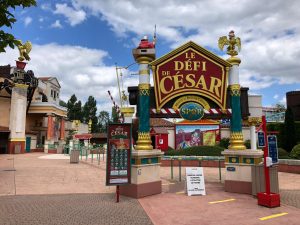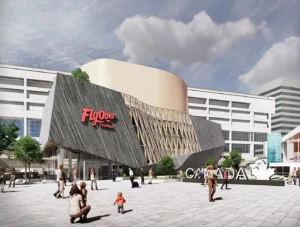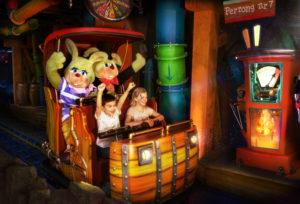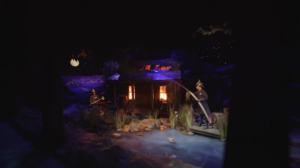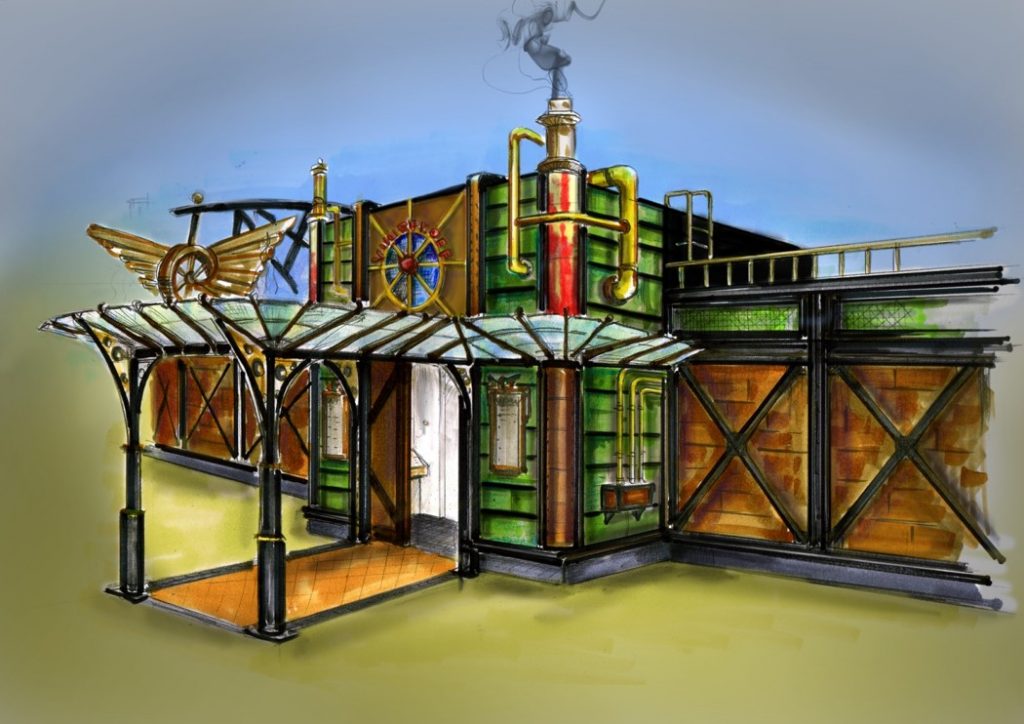
Dark or show rides are not exclusively found in theme parks. Nowadays, some museums are adding new experiences to their collection that may qualify for an entry in the Dark Ride Database. In this special, we focus on ‘Het Spoorwegmuseum’, the Dutch Railway Museum in Utrecht, The Netherlands. This museum has two entries in the database: the dark ride Stalen Monsters (2005) and simulator De Vuurproef (2012). The latter won a Thea Award in 2014 for its outstanding achievement. We spoke with Evelien Pieterse about the creation of this ride. She is now conservator of the museum, but was project leader during the development of De Vuurproef.

Name: Evelien Pieterse
Company: Het Spoorwegmuseum
Since: 2005, just before the reopening.
Favorite (semi-) dark ride:
Harry Potter and the Forbidden Journey at Universal’s Island of Adventures. The design, the atmosphere, the ride itself, the storyline, it’s really great.
Favorite show ride:The Simpsons Ride at Universal Studios Florida. That was really surprising. I thought it was a gentle ride because of the cartoon, but it was very intense and also very funny. And The Amazing Adventures of Spider-man (also Universal’s Islands of Adventures).
Het Spoorwegmuseum
With the first train running from the capital Amsterdam to the city of Haarlem in 1839, there was already a lot of history to tell when the first Dutch Railway Museum opened in 1927. The museum contained mostly a collection of images, documentation and attributes on the Dutch railways. Over the years, the museum moved around between different buildings in Utrecht and Amsterdam, before finally settling in the defunct Maliebaan station in 1954.
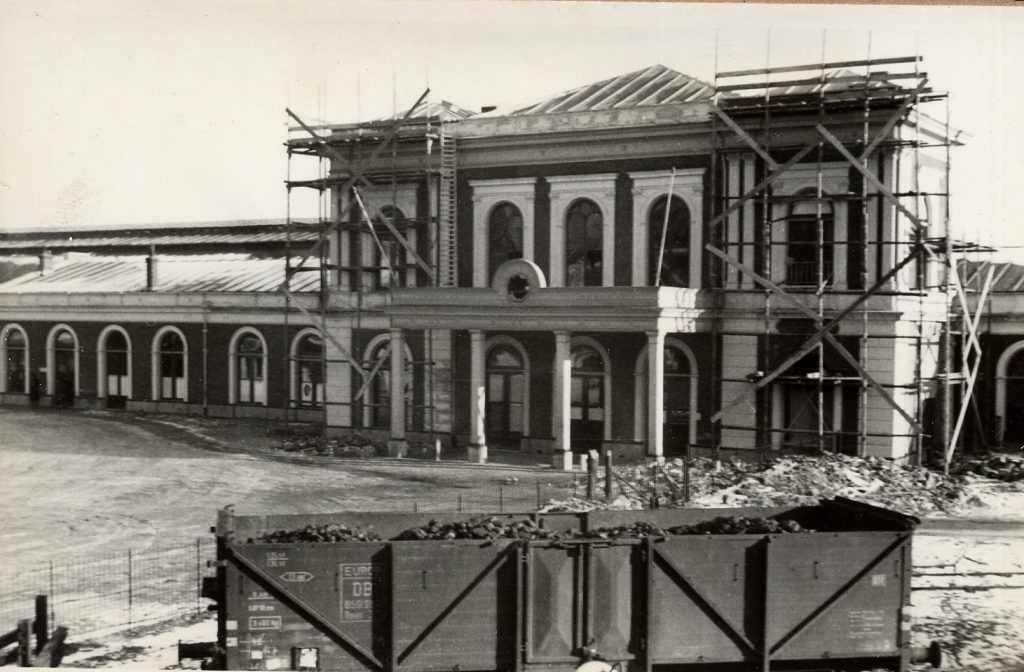
Now that the museum is located in a railway station along a functional railway line, the museum could add rolling stock. Many old trains and carriages were transported to Utrecht. One of them was a replica of ‘De Arend’, the very first steam train that made its way from Amsterdam to Haarlem. There was limited space inside the station building, so most of the rolling stock was parked on the tracks outside of the station. The outside climate took its toll on the trains and carriages and some work had to be done to prevent that.
The Transformation of 2005
In the early 00’s, another problem started to occur. Paul van Vlijmen, the director of the museum at that time, noticed that the amount of visitors were slowly dropping each year and that could become a danger for the future of the museum. “Trains are very interesting for a certain type of audience and often young children are excited by these huge machines, but we needed to get the big audience back,” says Evelien, “Paul thought that the museum had to be attractive for families. Mostly parents with children, but also grandparents with children.”
To achieve this, Paul and his team from the museum started looking at other museums, theatres and theme parks for inspiration. They were impressed by the way that theme parks tell stories and came up with storylines for themed rides that revolved around railways. Keyword in all these developments: Experience!
“Paul wanted a museum that focused on experience. It even became the slogan of the museum: “You have to experience that”. He wanted to give children and their parents an experience that they would never forget,” adds Evelien. “The idea was that people would learn and remember more from an experience than from plain information.”
The museum closed in 2002 for a major transformation. The Maliebaan Station, which had always been the main building of the museum, was renovated and restored to the state it was in the 19th century. A large indoor hall was built behind the station that now serves as the main building of the museum. All museum items that were on display were moved to the new building, along with most of the rolling stock.
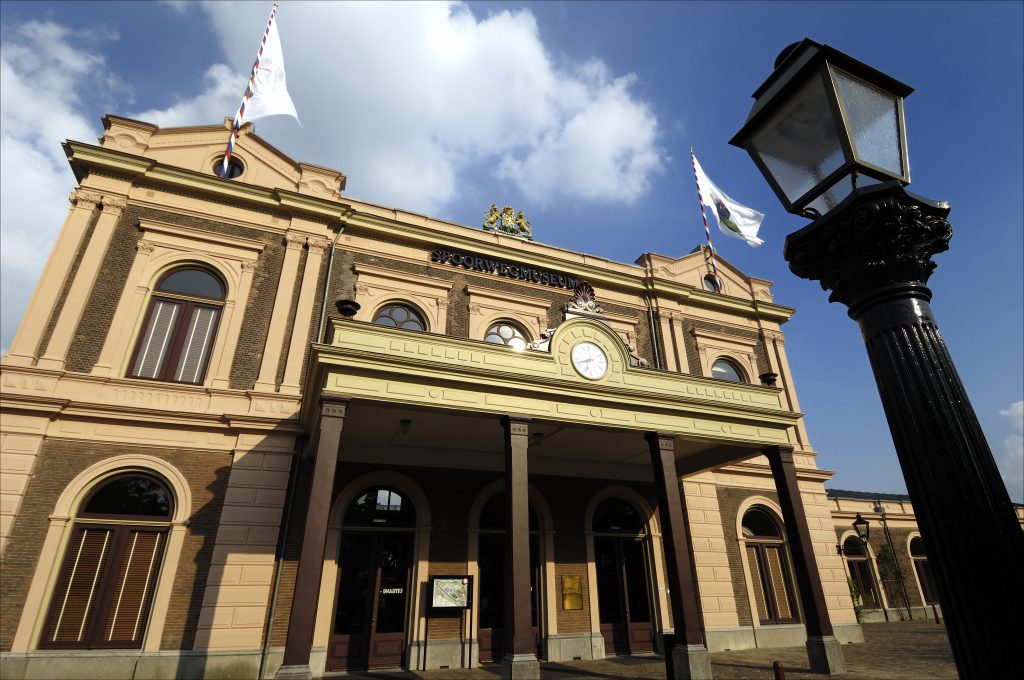
This new hall was also going to be the location for the new experiences, the so called ‘worlds’. The Museum choose a different way of storytelling for each world, to make sure that no experience would be the same. They would all focus on their own time period and each world would have a completely different way of experiencing the depicted period.
The first world, De Grote Ontdekking (The Great Discovery), is an audio walkthrough, spoken by the first train driver of The Netherlands. Starting in an 1800’s coal mine, from where you make your way through the mining village of George Stephenson (the British inventor of the steam locomotive). The first part focusses on the invention of the steam machine. Eventually you will pass through the workshop of Soeders, where De Arend was built, before arriving at station d’Eenhonderd Roe, a replica of the station where the first train departed in Amsterdam, including of course the replica of De Arend.
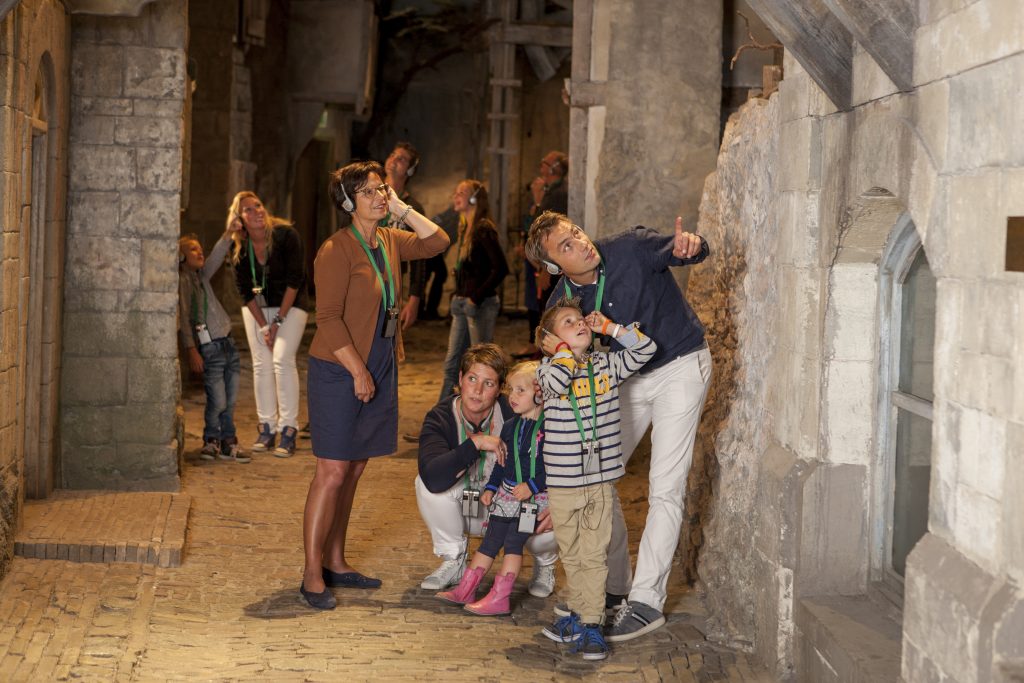
In the second world, they choose theatre as the vessel of the storytelling. Droomreizen (Dream Travels), is a show that revolves around a luxury train travel with the orient-express between 1860 and 1900. In this world, the actors tell the story. The show mostly focusses on rich tourist who traveled by trains to their holiday destination.
The third world, Stalen Monsters (Steel Monsters), revolves around the railway workers, working on the steam trains and along on the tracks. “The storytelling is split in two parts,” says Evelien. “You enter an attic of a grandfather who has a small museum up there. He’s telling his grandson stories about his work at the railroad and eventually, the riders will experience that work during the ride.” The ride features many trains and carriages. Some are replica’s, but some are real, including “De Beul”, the biggest steam locomotive of the Dutch Railroads. The experience takes place in the time period of 1918 to 1945.

The fourth world is the workshop. This is where the rolling stock is located. The museum tried a different approach here by not adding any information with the trains. Instead, the museum would have so called ‘EduTRAINers’ give presentation on the trains and carriages a few times a day. This approach was quickly changed, because the EduTRAINers were not always available for every visitor or train and people still wanted to know more about what they’re looking at.

The transformed museum opened on the 4th of June of 2005. “Many people where very enthusiastic about the new museum, mostly the visitors, the families with children. But our colleagues from the museum industry thought that it was ridiculous what we had done. They didn’t like the mixture of the museum and theme park experiences,” says Evelien. However, Paul van Vlijmen always stood by his vision.
In the first year of reopening, the museum attendance rose from around 150.000 to 350.000 people per year and eventually rising to 430.000 nowadays. “Eventually the museum industry turned around and many people from the industry came by to look at all the experiences of the Spoorwegmuseum.” Many museums have followed the example of the museum by adding experiences for the visitors to their museum.
The idea of the museum was to create a low threshold for families to let them feel that a museum can be fun. That you can discover and experience things in a different way. “Het Spoorwegmuseum is conceived as ‘beginner-museum’. If you want to take your children for the first time to a museum, go to het Spoorwegmuseum,” adds Evelien.
A fifth world
For 2012 the museum decided it was time to add a fifth world to the museum and again, this new world should be a very different and new experience. The world would be built in a small building outside of the main hall. This already existing building was contained a model train show, called Holland Rail Show, in the museum before 2005. From 2005 up to now, the building was left empty. “In 2005 we didn’t really have an idea or budget for the building so we left it at that,” says Evelien. That had changed in the early 2010’s.
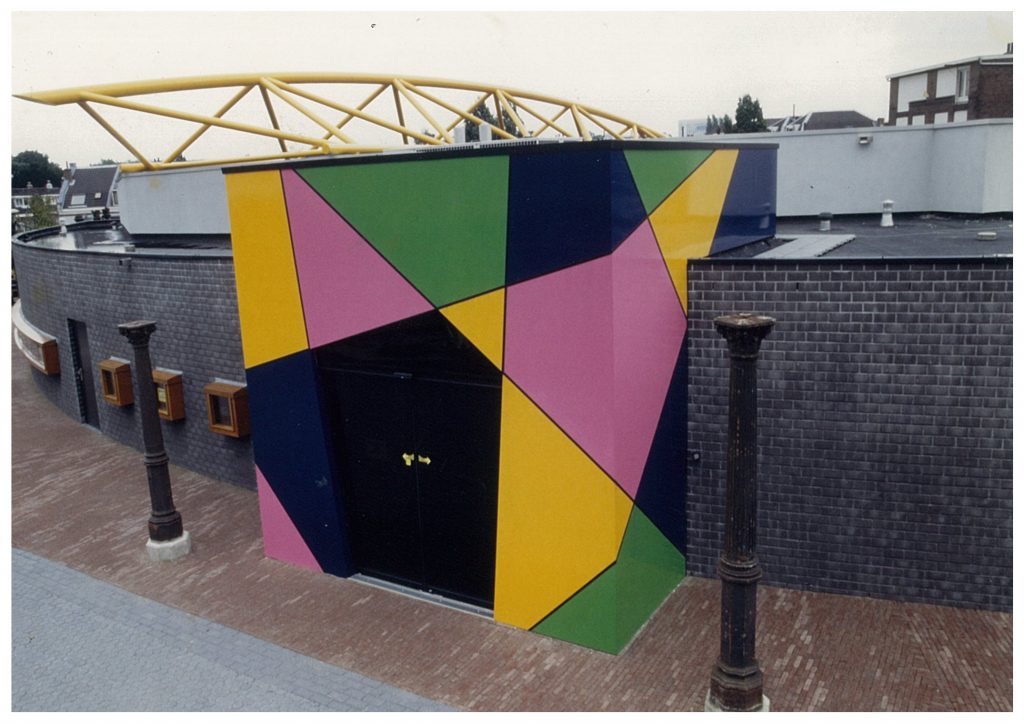
A creative team within het Spoorwegmuseum was formed, consisting of Paul van Vlijmen (CEO), Sandra Becholt (head of marketing and communication), Allegonde Rijckborst (office manager) and Evelien Pieterse (projectleader). The whole project started with one question: “With this new experience, we asked ourselves the question ‘what should people feel?’ rather than ‘what should people learn?’ If you do it the other way around, you start thinking about storylines, objects. It’s an entirely different approach to design compared to what a conservator usually does. We held onto that question very tightly from start to finish,” says Evelien.
They also looked back on the four experiences they already created. They evaluated each world and came to a clear conclusion. “The main lesson learned from especially Droomreizen and Stalen Monsters was that the storyline wasn’t constructed properly. This was especially clear on Stalen Monsters,” says Evelien. “You start out in an attic (which functions as a queue line) and suddenly you’re dropped in the ride. When you get out of the ride you’re back in the museum again, it ends very abruptly.” The new world needed a clear story arc containing a beginning, a middle and an ending.
The four existing worlds contained an audio walk-through, dark ride, theatre show and showroom. To be different, the museum chose to use film as the medium for the storytelling: “We wanted to something with film this time. A train simulator,” says Evelien.
After looking back, Evelien tells us the answer to their starting question: “We wanted our visitors to feel like the first train operators in the Netherlands, like pioneers. You have to keep in mind that those machines were to first to go that fast, before you could only walk, go by horse or by boat. Trains went a lot faster, up to 50km/h. The first train operators where the astronauts of their time. That’s how we wanted the visitors to feel.”
Inspiration from across the ocean
Now that the ‘what?’-question was answered, they started to think about the ‘how?’-question. It was time to gain some inspiration. The team traveled to Orlando, Florida to visit theme parks like Walt Disney World and Universal Studios. Evelien: “Several rides showed us a good way to structure a story. They used small steps to get the visitors into the right mood. Halfway through most chose to use a twist to mix things up.”
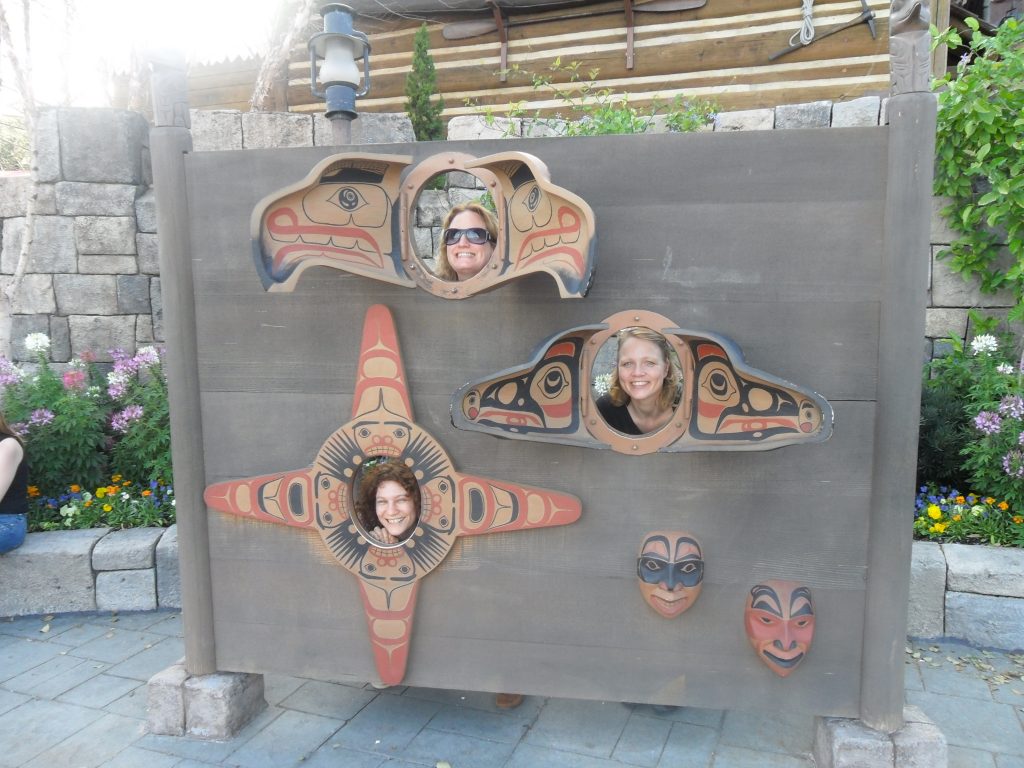
Harry Potter and the Forbidden Journey and Mission: SPACE were among the sources of inspiration. “We were really impressed with the Harry Potter ride, especially the queue line. Lines are a lot longer there and there were a lot of details from the films in that queue line”, tells Evelien. “For the story structure we looked at Mission: SPACE, where people get divided in small groups and then entered the capsules.”
Some ideas for the new world were found in the smallest details. “We noticed a ‘scent experience’ in a couple attractions and we really liked that,” tells Evelien. This ride is also where they found the moving chairs that were eventually used in the ride. But they also found another great part of storytelling in Orlando: Humor. “We saw that with The Simpsons Ride. We really liked the humor and wanted to have a funny wink somewhere.”
The whole Orlando experience gave the team a lot of ideas, but also solutions for problems they encountered. “The designated building was a bit small and we wanted a capacity of 200 people per hour, which was a tight fit considering the size of the building. We quickly got the idea to separate the ride into different sections. A pre-show, a little preview and explanation of what to expect. Then an unexpected twist, you’re going to do something entirely different than you expected before. Then there is the ride itself and it all end with a little nudge to make you think back about what you just went through” tells Evelien. This separation of parts was seen in for example Mission: SPACE.
This way, multiple groups could experience the different parts of the story at the same time. One in the waiting area, the second in the pre-show, the third in the main show and a fourth at the ending. In this way, they could pass 200 people per hour. “That was important, because on a busy day, you don’t want people standing in line for hours,” says Evelien. Apart from that, the different parts and rooms also had a positive effect on the storytelling: “We wanted to have a build-up of the story. With the waiting area, pre-show and main show all in different rooms, there is a different experience for each step.”
In Orlando the team also got the idea to use a famous Dutch person for the storytelling. “We saw multiple rides with famous actors. We thought it an extra experience if a famous person would speak to you instead of just someone of the museum”, tells Evelien.
The experience
Het Spoorwegmuseum decided to go for a concept called De Vuurproef. “Vuurproef” literally means “fire test”. In Dutch the word refers to a tough and crucial test a person has to go through. Also, obviously the ‘fire’ refers to the fire of the steam locomotive.
The riders of de Vuurproef would have to feel like they are one of the first train driver in The Netherlands. However, besides the limitations of the building, they also had a limited budget. “We tried to obtain grants or financing but we did not succeed. We had to build this with our own budget. We had about €1,8 million, which is quite some money, but we also had to remodel the building . We solved that by using our resources creatively, maximizing the effects of the chosen resources” says Evelien.
Three simulators were built for the main show. These were supplied by Multi Pilot Simulations (MPS, The Netherlands) and are basically flight training simulators. The moving seats were supplied by D-Box (Canada). “We used existing products to stay within budget. To have something custom made would have cost way more,” says Evelien.

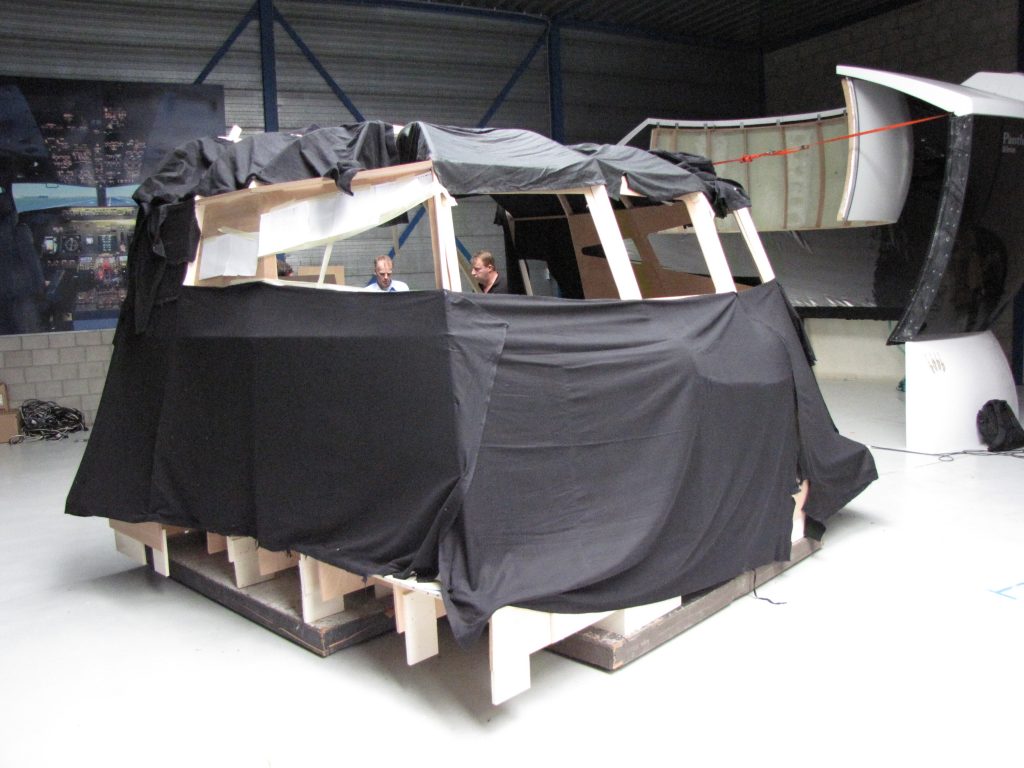
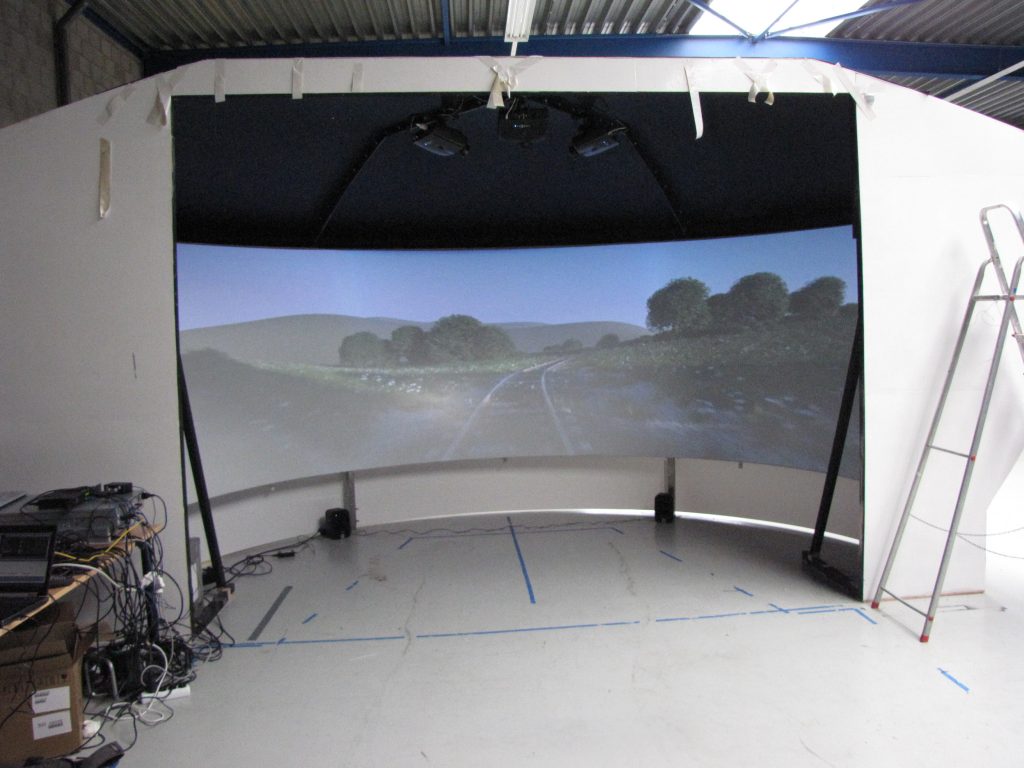
During the main show, 6 rides will take place in the driver’s compartment of a train. They will have to work together to drive the train. There is fireman that needs to maintain the pressure of the engine, a train driver who has to accelerate the engine, a brakeman who controls the brakes and the other three will have to use a dead man’s switch every time a bell rings. “People really get the feeling of driving the train and also think that they have to control the train together, that if they don’t use the brakes, they’ll fly out of the bend. This is however sham interactivity.” The film of the simulator does not change depening on the activity of the riders. “We didn’t have the budget to really make it interactive,” Evelien continues.
Het Spoorwegmuseum choose to keep the leadership of the project by themselves, rather than hiring a company to build the new ride. “Paul van Vlijmen made that choise, because we have the best knowledge of our audience. We know what they like and what they want. Moreover, if you do a project like this yourselves, you really want to do your best. You can hire a company, but in the end those people are gone and have nothing to do with the project anymore. Now if something’s wrong with the experience, we only have ourselves to blame,” tells Evelien.
Developing the new world
The four project team members started to work on the concept of the ride. When people would enter the building of De Vuurproef, they would think that they entered a museum depot, with showcases full of rare and mysterious items. Technical parts, that are a bit weird or maybe a little steampunk-like and even a talking painting. Riders should get the feeling they’re getting a tour through the depot to see much more of these items, but in a turn of events, they become train drivers themselves. Riders will enter a room where three steam locomotives await them. The team thought that a steampunk style for the attraction would suit the experience.
The ride should be more than just the experience of driving the train. In a clever way, the ride gives you a lot of information. On screens in the waiting area, when riders should still have the illusion of being in the depot, a man tells them what the train has done for people. It gave them a way to travel through the country in hours instead of days. The pre-show contains a lot of information on how a steam engine works, which you need during the train ride. It’s a smart way of the museum to give riders a little education on the history of trains. “We don’t really want to teach people things, but we want to inform them while they are not aware of it,” says Evelien, “and that is a big difference with theme park rides.”
At first, the team was thinking about using standard motion simulators. However, they quickly realized that this was not an option. “We could not use them because they have a turning circle that is way too big. We couldn’t fit those in the building or the capacity would be too low. Paul coincidental met a manufacturer of flight simulators (MPS). That turned out to be the right fit.” Instead of a moving cabin, the simulator would have moving seats (supplied by D-Box).
Constructing the attraction
When the team finished the concept, they asked designer Jaap Verburg to turn it into a design. Evelien says: “Verburg translated these ideas into fantastic drawings. It’s really fantastic what he did. We gave his drawings to the construction company, Kloosterboer Decor and they built everything almost exactly the same as the drawings of Verburg.” The museum hired a local film production company, Il Luster Films to produce the media. Il Luster called in animation company House of Secrets for the animated film of the main show.

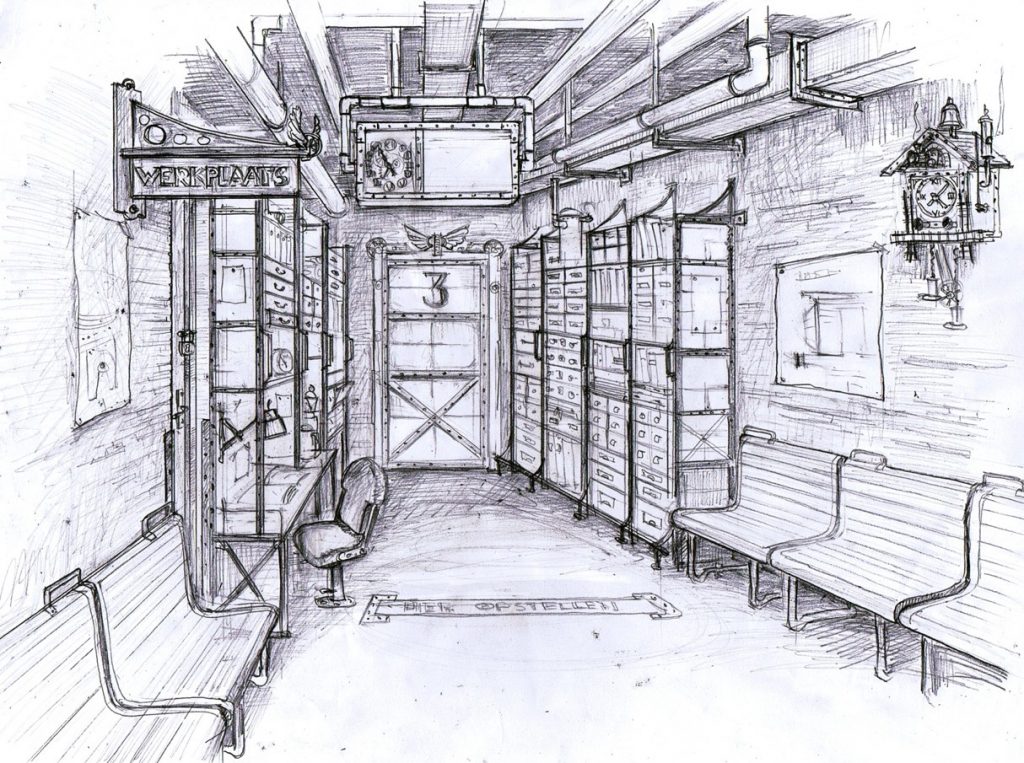
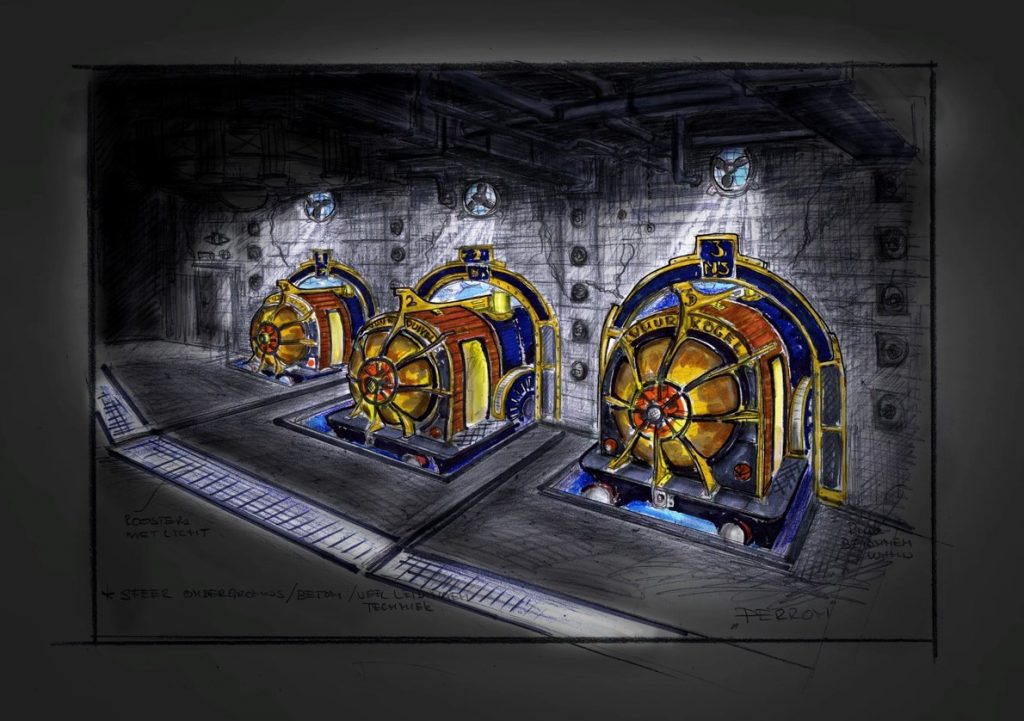
As projectleader, Evelien was in charge of the works on the building: “It was very challenging for us to work with so many people. Luckily Verburg and Kloosterboer already worked together for quite some time, so they really understood each other.” Paul van Vlijmen would aslo step on the construction site as much as possible to see if the work matched their expectations. Fortunately, everyone knew what to do so in there were no delays in the overhaul.
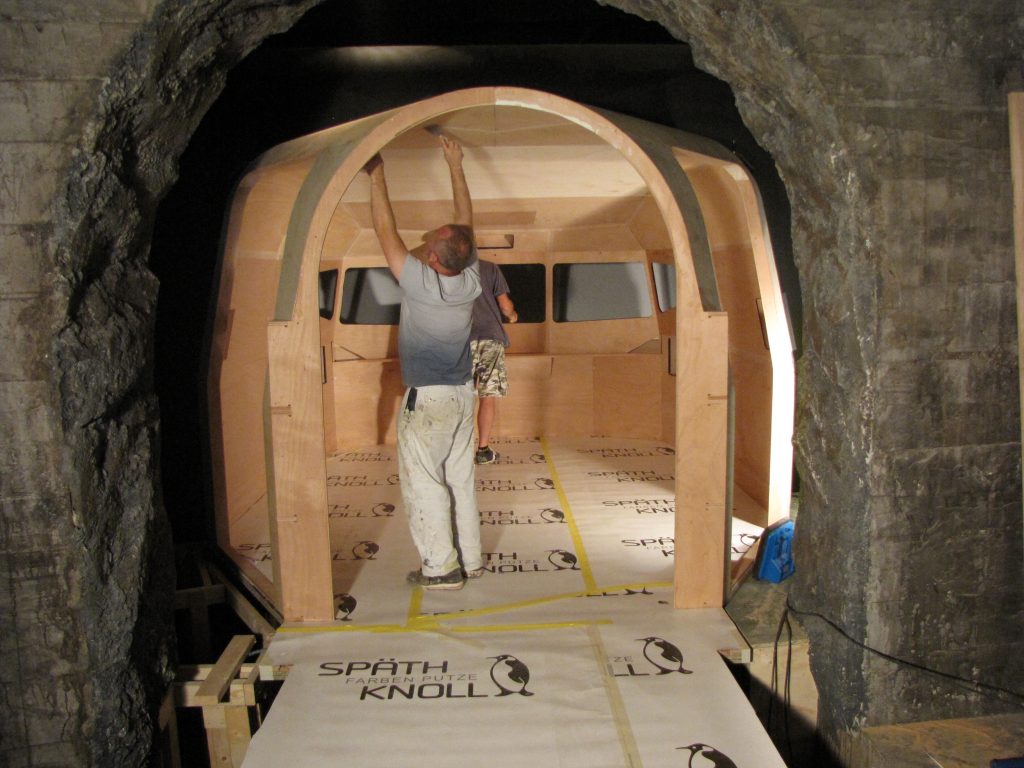
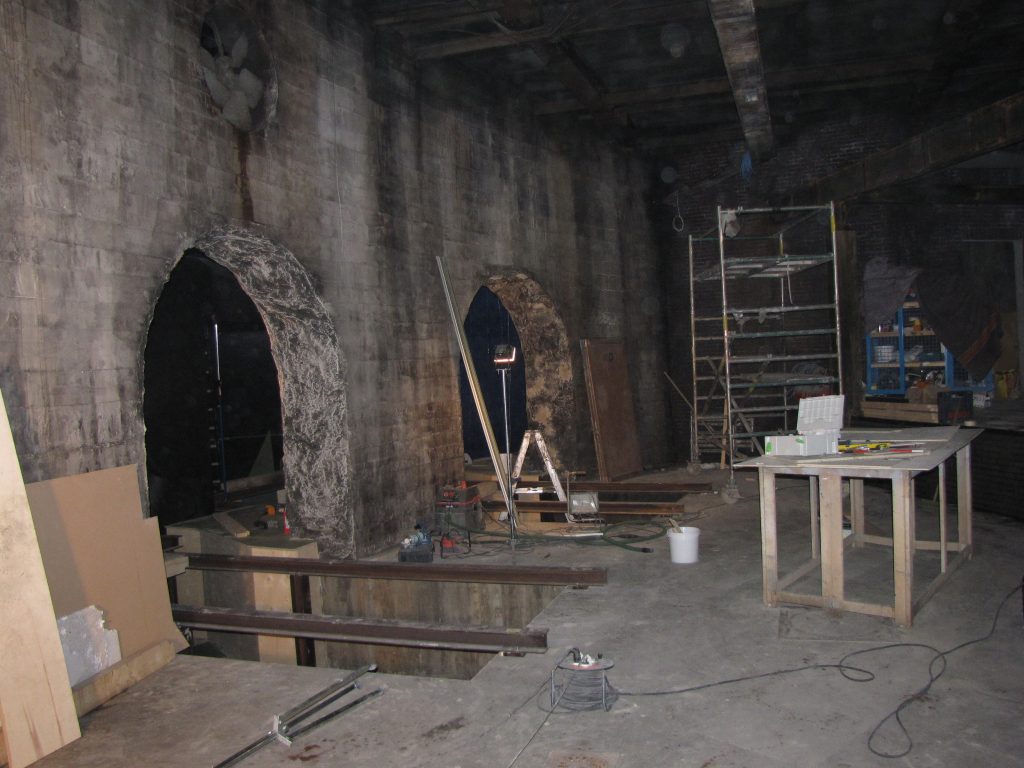
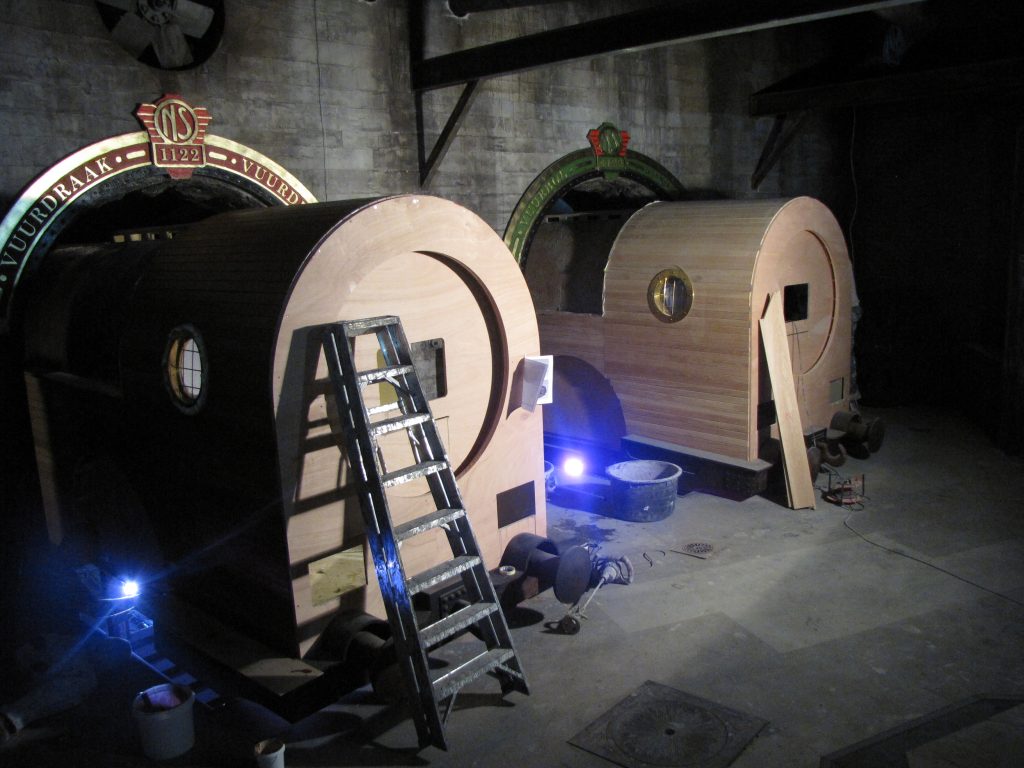
As the narrator for the pre-show, they decided to ask Dutch actor Rutger Hauer (1944-2019) who also starred in many Hollywood movies like Blade Runner, The Hitcher and Batman Begins. “We asked Rutger Hauer for the ride and to our surprise, he actually agreed. From the start we wanted Rutger, because he was the best fit for the whole experience. We choose a lesser known actress, Nhung Dam, for the second part, who’s more known to the youth.”
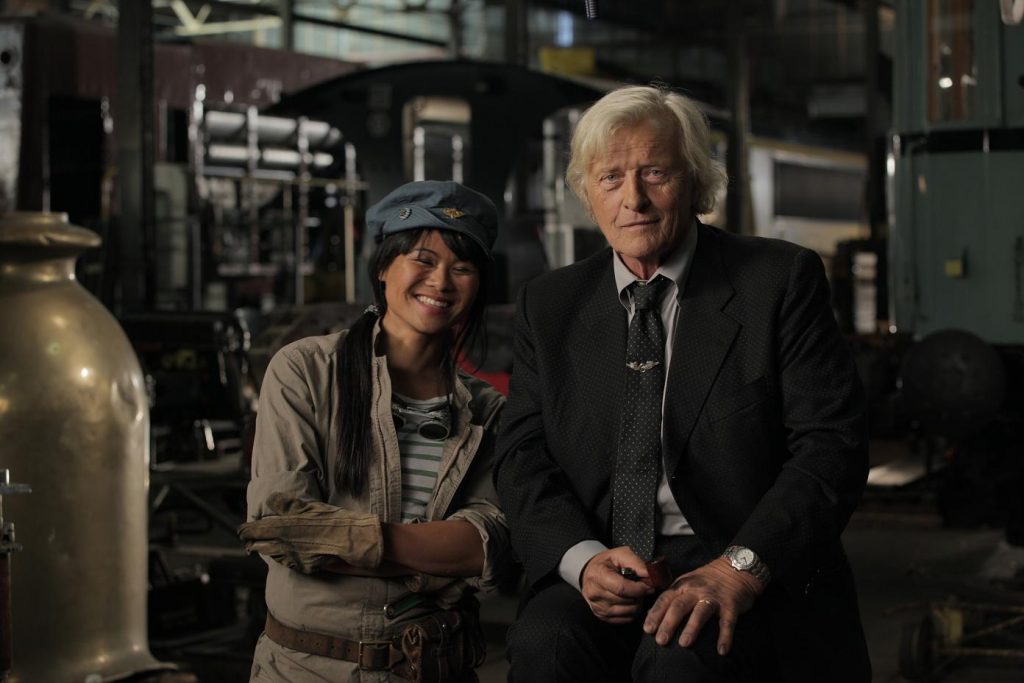
The ride however, did suffer a delay on another part. The computers that were supplied with the system did not have enough capacity to run the simulations. “We had to take a dramatic decision to delay the opening for approximately six weeks to get new computers. We asked another company to supply new computers and eventually got the ride to work, but we still had to postpone the opening. Something that had never happened to us before.” The museum chose to finish the ride completely and make sure it worked, rather than to open it with people noticing that there was still work to be done. “People can get nausea if the movement of the seats are not fully integrated,” notes Evelien. This delay meant that the museum could not open the new ride before the fall break of the schools in The Netherlands, a busy time for museums.

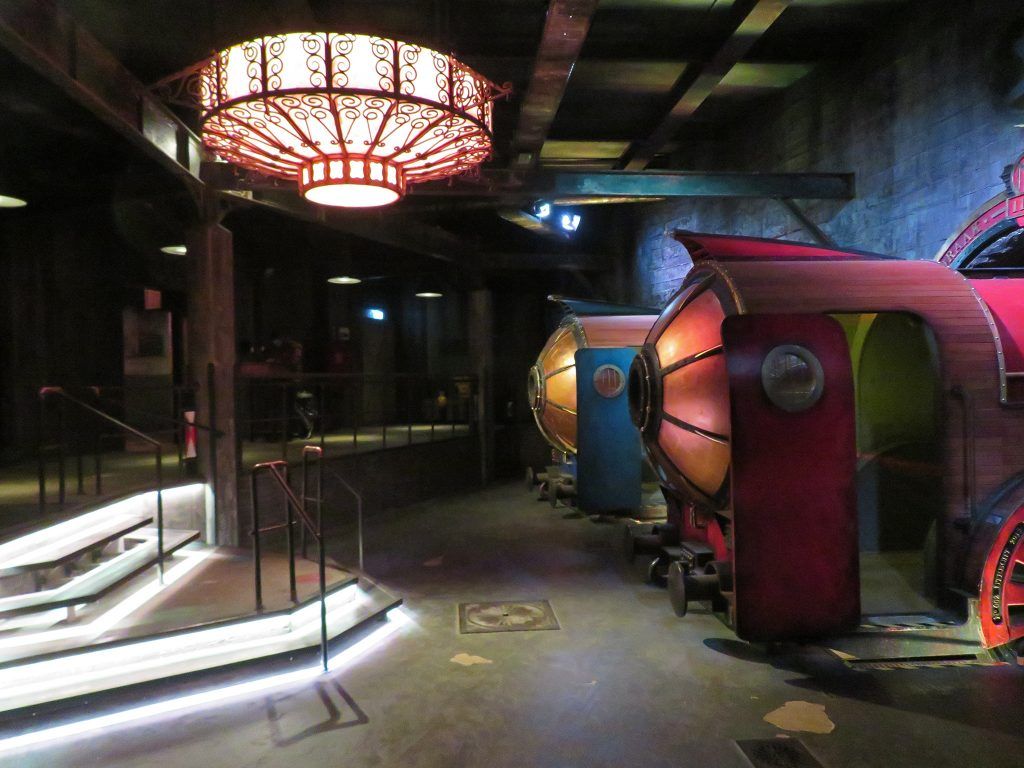
Opening and reception
New computers solved the problems with the simulators and the ride opened on November 22, 2012. The delay had a positive side. By taking a little more time, they could open the ride without any major problems. No ‘teething troubles’ appeared. “Of course it is difficult to be working together with a Canadian company who has to send parts from Canada, but we got everything to work,” tells Evelien.
The hard work payed off. Not only the guests were really impressed by the new experience of the museum, but also critically the ride was very well received. Almost exactly a year later, the ride was awarded with a Thea Award for ‘Best 4D Simulator Limited Budget’.

“We were invited to give a presentation in the United States after winning the award. People were really impressed with our budget. A theme park ride usually costs more, but for a museum, this was a really huge budget. Most exhibitions cost less than 10% of the budget.” But it was not just the budget that impressive: “We got compliments from different people, including people from Disney, that the waiting area was really well done, with the talking picture, the juke box. Even if you have to wait for some time, you are still being entertained,” says Evelien.
Eight years later
After 8 years of operation, there is one big thing that had to be changed in De Vuurproef. The ride features an on-ride photo and video moment. These clips and photos could be seen in the after-show and downloaded from the museum’s website. However, due to the GDPR-law (the European privacy law since 2018), this was no longer allowed. According to Evelien: “It was a lot of work to get that photo on the right moment in the ride, but now it’s not possible to publish them on our website anymore. I think it’s a shame that we couldn’t do anything about it. The ride ends with a small joke of Rutger Hauer, but the photo should have been the cherry on the cake.”
An updated photosystem that does comply with the GDPR-law is too expensive. The museum rather spend money on other expositions. “If the ride experience would get an 8.5, but could become a 9 with the ride photo, then we choose for the 8,5. We would rather turn another experience from a 6 into an 8. We decided to keep it like this, but somehow it still bothers us a little.”
A look back
Evelien is proud when looking back on the period of the development of De Vuurproef: “Since I am a cultural historian, I usually start with information and stories. It was a real challenge to start the other way around. To start with the feeling. That is what really inspired me and I will always remember that. It was a fantastic thing to do. I never got to do something like that. It was probably a once in a lifetime experience.”
With the addition of a fifth world, 7 years after the reopening of the museum, you can conclude that this won’t be the last time the museum will create a new experience. The museum has permanent expositions, which are made to last 15 to 20 years, and temporary expositions. These last between 3 to 12 months. “We’re now in a phase where the oldest expositions are 15 years old and could be replaced, but not De Vuurproef. First we’ll look at the other attractions.” tells Evelien.
Looking back at the experience gained in the design of De Vuurproef, Evelien knows what lesson she would take with her to the creation of a new ride: “I am really proud of the story, receiving large results with little resources. And the fact that you can turn your way of thinking around, maybe that is even better. I would definitely do that again.” Evelien still supports Paul van Vlijmen’s vision to develop the experience in house.
But there is one thing that Evelien wants to add in a next project: interactivity. “As conservator, I created the techlab and model attic of the museum. Especially the Techlab is learning by discovery and I really see the value of that. De Vuurproef had sham interactivity, a next new world should have real interactivity and participation. That’s what I’m looking for. I believe that you should always develop, always try to do new things.”
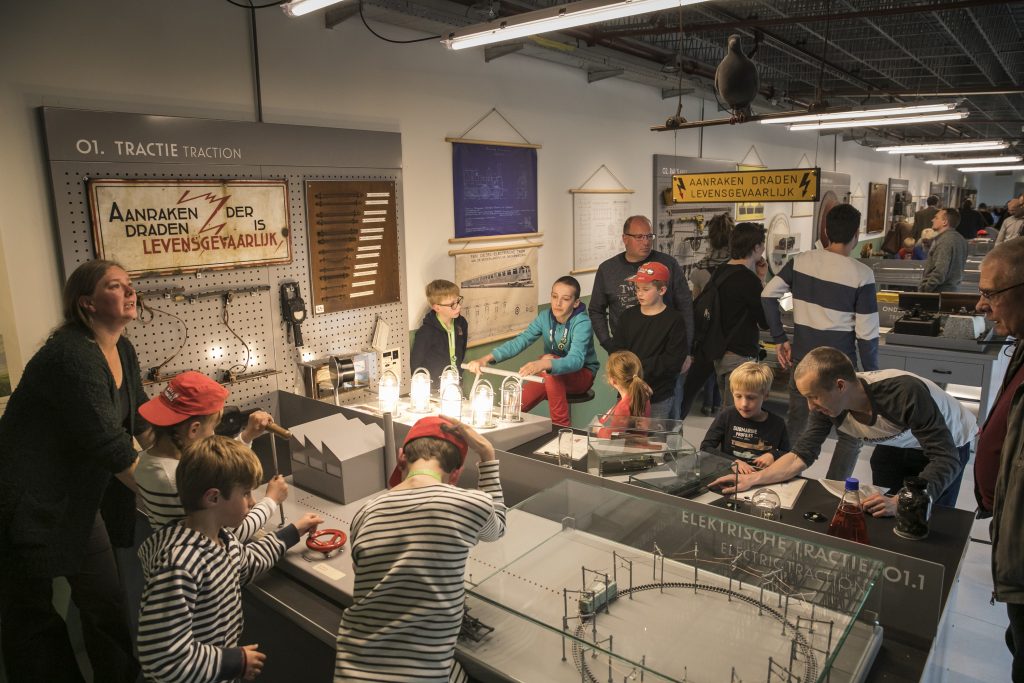
The future
De Vuurproef is a ride that won’t require any changes in the near future. However, the infrastructure of the ride could allow a new story. “That’s the advantage of this concept. I can’t foresee the future, but if we want to put the ride into a different theme, that is a possibility,” says Evelien. “However, De Vuurproef is not on the list for replacement yet.”
What is on the list is a technical update of the Stalen Monsters. The ride, built by KumbaK and Imtech is 15 years old and still works on old computer systems. A new computer system would assure the future of the experience. Also De Grote Ontdekking will not undergo any major changes, although the audio equipment might be replaced soon.
Evelien could tell us however that a decision was made to work on Droomreizen next: “We thought it was the least successful when we look at the worlds. The theatre is great, but the area before the theatre does not provide enough experience, it’s quite passive.” It is still too soon to tell what will be done to this world, whether only the part before the theatre will be redecorated or whether maybe a complete new world will arise on this location. Also a new theme is still not certain: “It could still be about luxury travels, but perhaps also something about mobility or travels in general.”
And with this look into the future, we concluded our very interesting talk with Evelien. We would like to thank Evelien for her time and her wonderful stories on the development of De Vuurproef. We would also like to thank Evertjan de Rooij of Het Spoorwegmuseum and former CEO Paul van Vlijmen for the creation of these great experiences in Het Spoorwegmuseum.
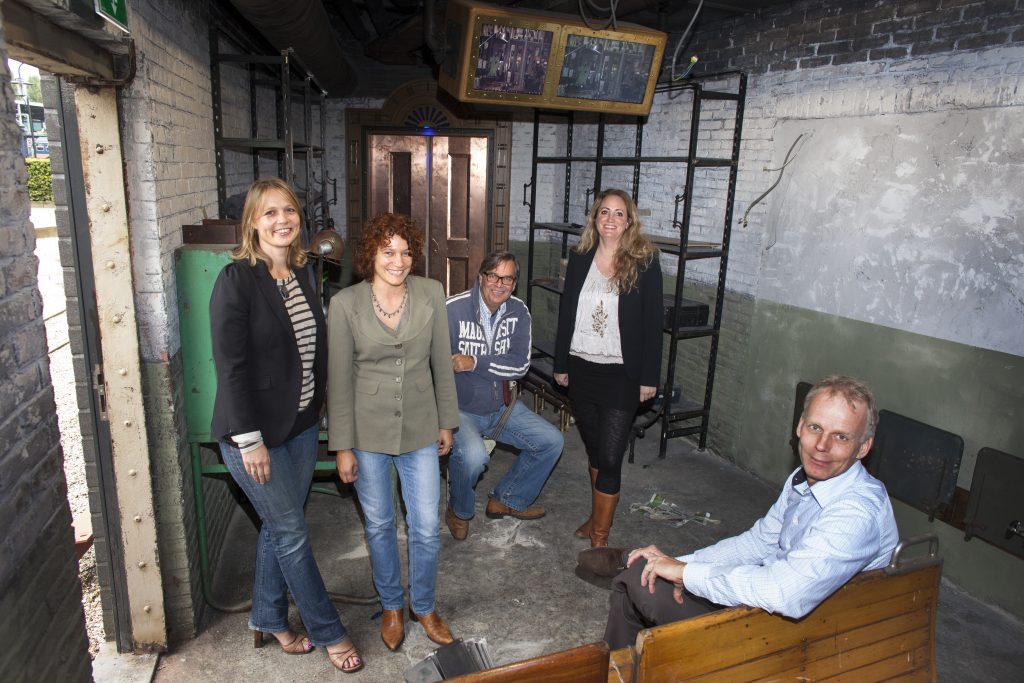
©2020 Dark Ride Database
Interview and article by Johan and Erik
Images provided by Het Spoorwegmuseum


